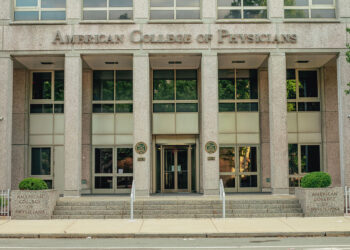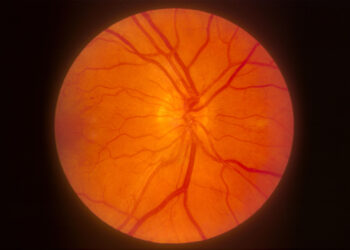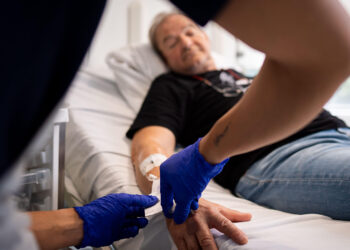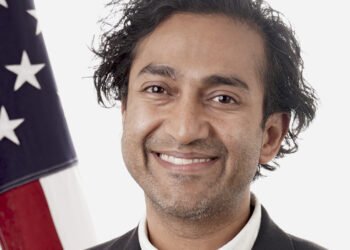ORLANDO, Fla. — For years, fully ablative laser skin resurfacing — in which the epidermis is removed using carbon dioxide or erbium lasers — fell out of favor among energy-based medicine specialists and their patients because of long recovery times and the need for general anesthesia.
Fractional ablative laser resurfacing, a less invasive procedure that makes tiny holes in the epidermis and leaves surrounding skin intact, became more popular, along with nonablative collagen-stimulating treatments.
But at the American Society for Laser Medicine and Surgery (ASLMS) 2025 Annual Meeting, held from April 24 to 26, several presenters spoke about a “resurgence” of the full ablation approach.
They cited two reasons: First, results from fractional treatments have not been as dramatic or durable as hoped for, especially in older patients, and second, newer laser technologies are allowing for ablation to be performed without general anesthesia and with healing times closer to those seen with less-invasive treatments.
Echoing many of his colleagues at the conference, Oculofacial Surgeon Brian Biesman, MD, of Vanderbilt University, who is in private practice in Nashville, Tennessee, said that in recent years he has returned to performing fully ablative procedures after having given them a rest.
“The moment for me was when I saw a patient who I knew I had seen several years before,” Biesman said in an interview. “I didn’t remember what [procedure] I had done, and I thought she needed laser resurfacing. I opened her chart and realized that I had done fractional ablative resurfacing on her 3 years before. That was when I decided that for what we put people through, they need to have a better result than this 3 years later. I decided to get back to more aggressive approaches.”
Dermatologic Surgeon Thomas Rohrer, MD, who is in private practice in Chestnut Hill, Massachusetts, said in an interview that to treat deeper lines, especially in certain parts of the face, “we’re coming to a consensus that we need that more aggressive treatment. That’s why you’re seeing a lot of talks this year about fully ablative devices. But with that comes the risks associated with it and the downtime.”
Ablative Therapy With Less Pain and Shorter Recovery
While ablative procedures using time-tested technologies — CO2 and erbium lasers — are also making a comeback, Rohrer and other specialists pointed to a newer device that they described as a game changer: The UltraClear 2910 nm cold ablative fractional laser, cleared by the US Food and Drug Administration in 2022 to treat photoaging, wrinkles, and acne scars, which has since seen its indications expanded to include some types of pigmented lesions.
The device can be used on fractional ablative or fully ablative settings. It does not heat tissue the way traditional ablative lasers do. This results in reduced pain and shorter recovery time, and offers additional protection against hypo- and hyper-pigmentation, a key concern with darker skin types.
The 2910 nm laser “has really revitalized our resurfacing practice in patients aged 50 to 80,” said Paul Friedman, MD, who is in private practice in Houston, “because of the patient comfort and the quicker recovery process,” which can be as little as a week compared with a month or more for other technologies.
Ablative procedures with the 2910 nm laser usually require only “topical anesthesia and occasional nitrous oxide,” Friedman said at the meeting. “Prior to this technology, with our traditional resurfacing modalities, we found it more efficient to bring in an anesthesiologist. But obviously there is hesitance from patients about this.”
Suzanne Kilmer, MD, a dermatologist at the University of California, Davis, California, who is also in private practice in Sacramento, California, and a widely recognized expert on full ablation, said that she was still getting to know the device. She has yet to use the 2910 nm laser for a fully ablative procedure, she said, sticking to its fractional settings.
“I use it in conjunction with the traditional erbium and CO2 lasers,” Kilmer said in an interview, adding that she is fine with going slow for now. “There always is a learning curve with devices,” she cautioned. “And you’re learning on risky procedures.”
Preventing and Mitigating Complications
Full ablation “is a great procedure — there’s nothing else like it,” Kilmer continued. But unlike with fractional treatments, it also means that “you’ve taken off the whole top of the skin. There’s a huge open wound. You’ve completely disrupted the dermal-epidermal junction.”
During different seminars at the conference, experts offered strategies for avoiding treatment-related complications, including hypo- and hyper-pigmentation, scarring, and infections. They spoke about selecting the patients who are likely to comply with demanding aftercare protocols, highlighting how they rescued cases in which patients did not.
And they shared horror stories of patients who went kayaking 3 days after ablative treatment, accidentally vomited on their wounds, who developed severe erythema or scarring, or developed serious infections despite the use of antiviral and antibiotic prophylaxis. With some of these complications, practitioners acknowledged that there is little consensus on how they should be managed.
Jacqueline Watchmaker, MD, a dermatologist in private practice in Scottsdale, Arizona, reviewed the case of a patient who developed a severe bacterial infection following ablation because of noncompliance with aftercare recommendations. It is important to know how soon infections are likely to appear, Watchmaker said, and to be aware of signs — especially pain that increases over days. It’s also important to select patients carefully for their likelihood of complying, she added.
Other presenters discussed ways to improve compliance, such as by making video tutorials.
Dermatologist Arisa Ortiz, MD, director of Laser and Cosmetic Dermatology, at UC San Diego Health, San Diego, and the past president of ASLMS, warned that even with antibiotic and antiviral prophylaxis, patients can develop breakthrough infections requiring emergency treatment. The right type of antibiotic prophylaxis remains controversial in fully ablative resurfacing, she noted. Any apparent infections should be cultured before treating them and systemic infections, requiring hospital treatment, can occur.
Biesman, in his comments, agreed that antibiotic prophylaxis remains a controversial topic with ablative resurfacing. “The argument from infectious disease is that you don’t need antibiotic prophylaxis,” he told the conference, but in practice it is standard. And while many clinicians use cefalexin, which does not prevent infections from methicillin-resistant Staphylococcus aureus, or MRSA, “you really need to think about MRSA coverage” when prescribing an antibiotic, he said.
Friedman, Biesman, and Kilmer disclosed financial relationships with Acclaro, the maker of the 2910 nm UltraClear laser, along with other device manufacturers, pharmaceutical manufacturers and/or and skincare companies. Rohrer disclosed relationships with Candela and Lumenis. Watchmaker disclosed relationships with AbbVie and Allergan. Ortiz disclosed having financial relationships with several companies.
Source link : https://www.medscape.com/viewarticle/full-ablation-making-comeback-energy-based-medicine-2025a1000dd4?src=rss
Author :
Publish date : 2025-05-28 11:24:00
Copyright for syndicated content belongs to the linked Source.














